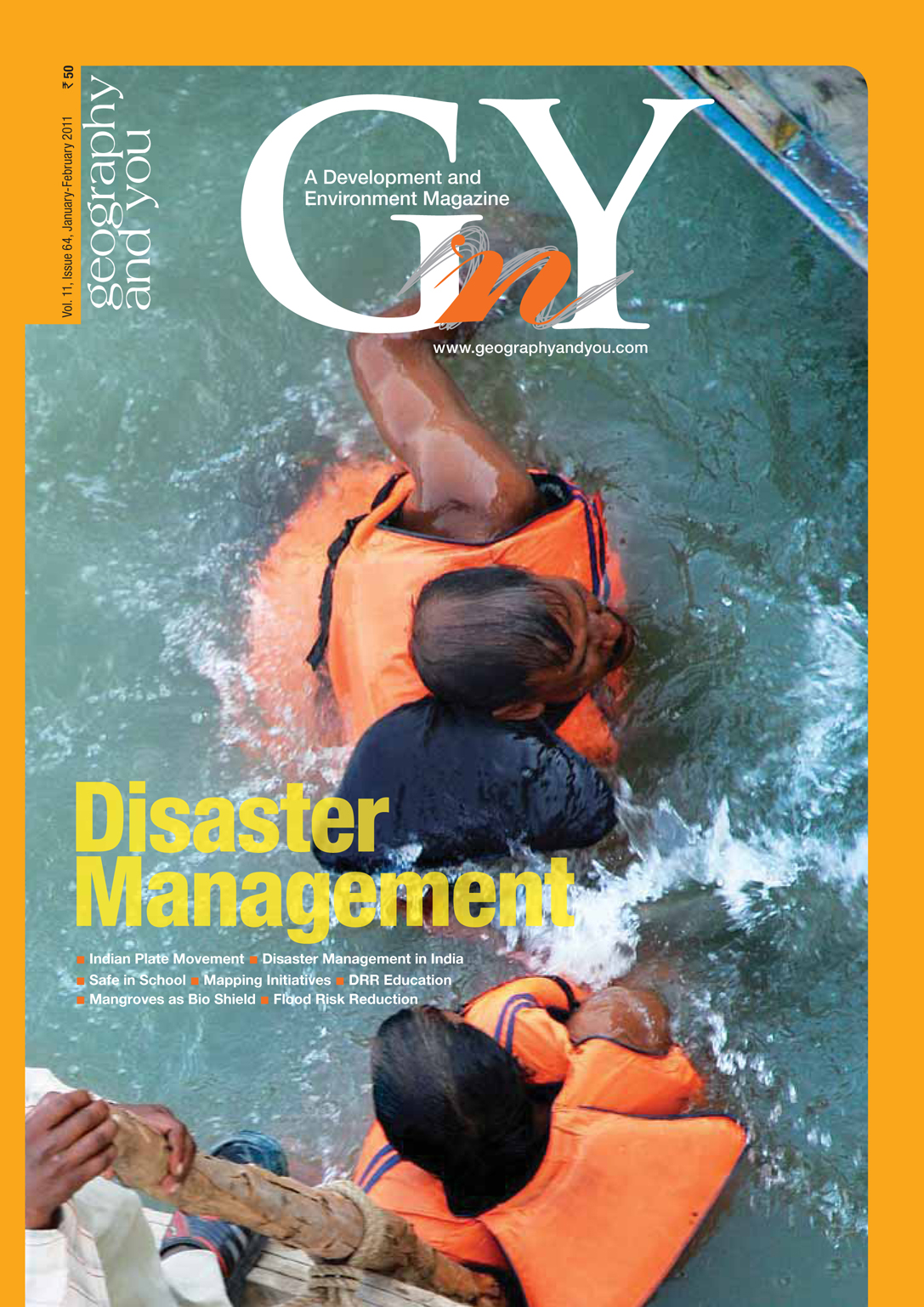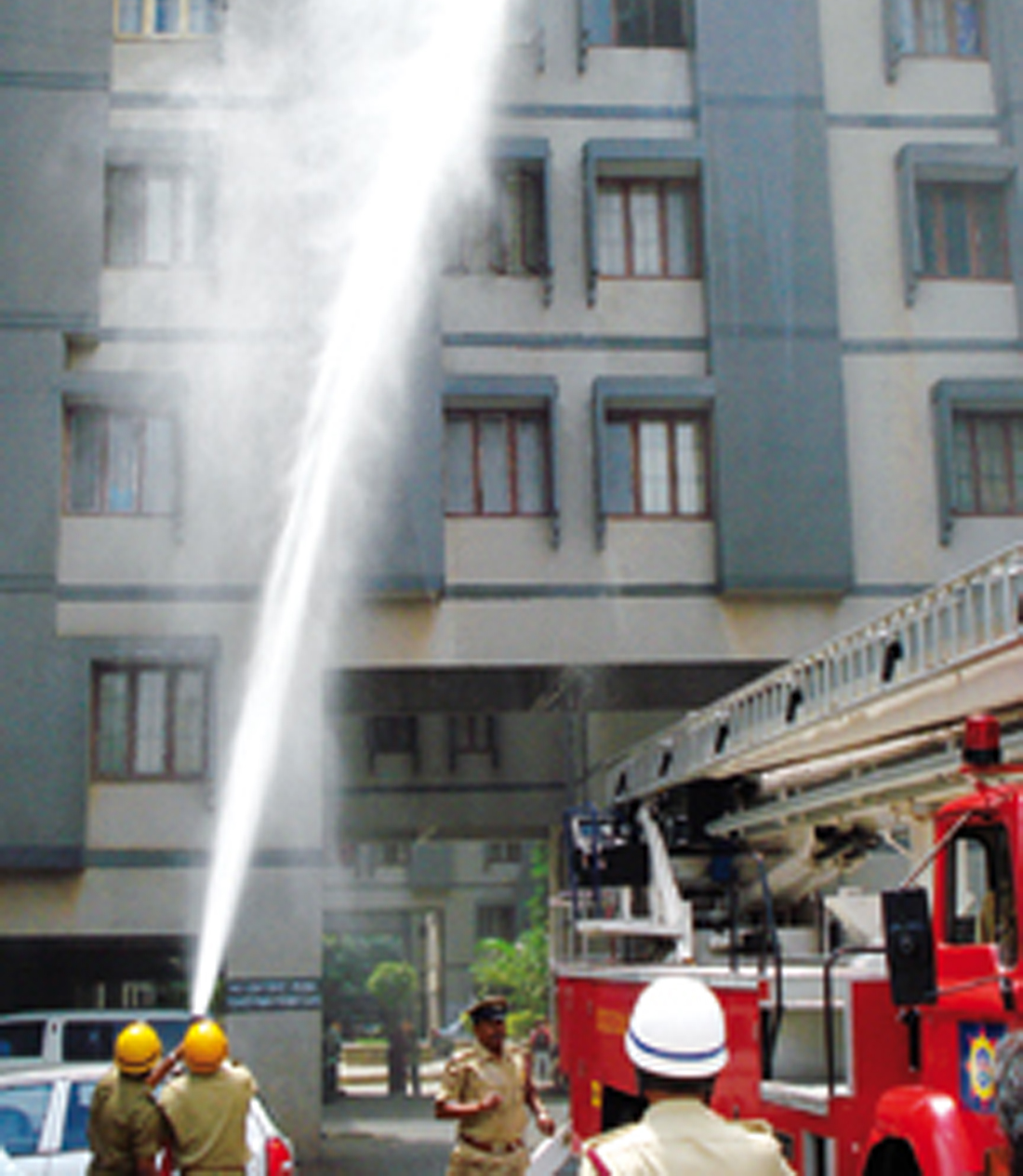
Inside this issue
Disaster Management
Disaster Management in India has evolved over the years and today it encompasses both pre and post disaster phases to include aspects of prevention, mitigation, preparedness, response, rehabilitation and reconstruction.
Increased practical and theoretical awareness of disasters, as well as structural changes and hazard mitigation are critical steps in making a school safe. Campaigns towards this will save young lives and sow the seeds of change for more resilient communities.
Besides topographical information, maps prepared for the National Disaster Management Authority (NDMA) require additional information on disaster management. A fresh initiative to generate maps specifically for NDMA’s activities has been started.
Mangroves have traditionally been part of the coastal ecosystem, acting as a natural barrier against tidal waves. Studies have now established that mangroves did indeed play a crucial role in minimising damage during the December 2004 tsunami. Certainly the benefits of mangroves are manifold and they must be nurtured and conserved.
A natural process of ebb and flow - floods turn hazardous only when they affect people and property. The judicious use of flood prone areas is the need of the hour to minimise damage while allowing a river its free flow.
The understanding of geotechnical characteristics of the near surface material is of fundamental interest in seismic microzonation for land use planning and designing of new engineering structures.
Microbes when added to contaminated environments, such as oil spill sites, can accelerate the natural biodegradation process.
India's Outdoors
The magnificent railings and gateways of the stupa at Bharhut in Madhya Pradesh constitute a visual store house for the reconstruction of history of contemporary period and embody the spirit of our culture - continuity in diversity.
The cheetah was last seen in India in 1947. Today there is hope that the cheetah may well roam the plains of India again with Project Cheetah implemented successfully.
Considering the national importance of genetic diversity, LaCONES is a project to make use of biotechnological intervention for the conservation of endangered animals.
Once seen in large numbers across the State, the vultures of Chhattisgarh are experiencing a steep decline for any bird species in India. A handful of sightings are the only proof that the birds still survive in isolated pockets of the State.
A fleeting visit imprinted a memorable frame in our hearts inlaid with spoonbills, Asian openbills, coots and common moorhen swimming in languid grace. Last season there were as many as 75,000 birds in this 30 hectare Sanctuary.
In brief
Dear readers, As Indians, we are proud of so many varied attributes–but the foremost is our attitude. The ‘chalta hai’ takes the cake. We are a satisfied lot, happy in our cocooned existence of neo materialism. Yet, ignorance is acceptable, complacency is not. Builders and heavy weight indust

